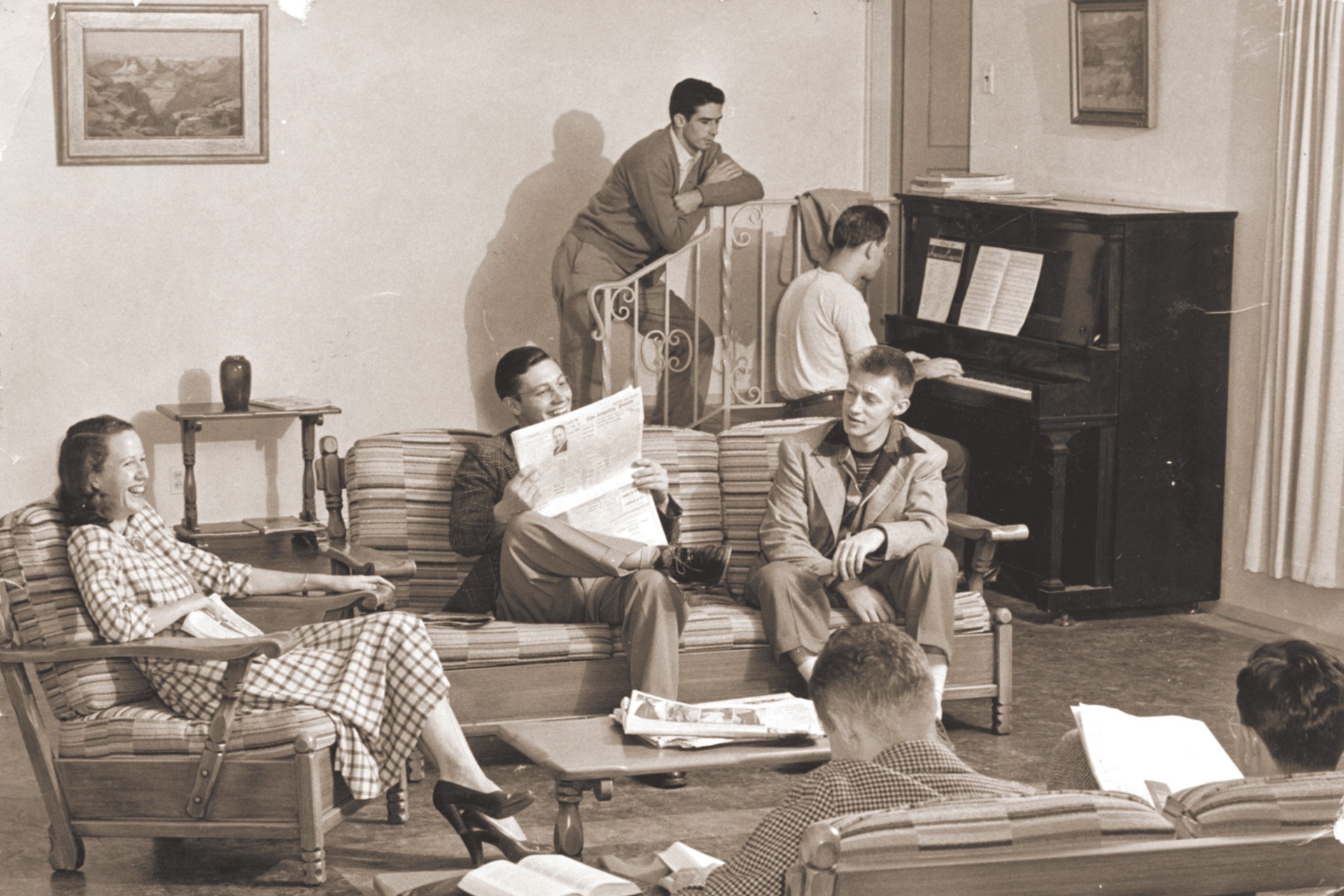The Roots of Woody Hall
Historic Woody Hall was dedicated in 1948 on the La Verne campus. The first men’s residence hall, it was named for Isaac J. Woody, the beloved groundskeeper. Woody Hall was the first of many new buildings to go up on campus in the postwar era.
July 12, 2021
The COVID-19 pandemic was not the first adverse circumstance to serve as a catalyst for positive change at the University of La Verne. In the mid-20th century, from behind the long shadow of war and depression, an enduring “silver lining” emerged on campus—one still visible today.
For the first half-century of its history, the University of La Verne had no men’s residence hall. A women’s dormitory opened in 1918, but men who came to La Verne either had to commute or find their own housing in town. In many cases, they ended up living in the back lots of the town’s residents or in small sheds—whatever accommodations they could find.
Financially, the school was not in a position to build housing for its male students during the 1930s because of the Great Depression. Then, when World War II broke out, the number of male students plummeted.
After the war, when the financial status of the college improved and the GI Bill opened the floodgates of returning soldiers anxious to get advanced education, the first men’s dormitory was built.
Woody Hall was officially dedicated on October 17, 1948. It was named for Isaac J. Woody, the keeper of the grounds and a beloved figure in the La Verne community. During the Great Depression, when a number of students found it difficult to pay tuition, he would sometimes loan or give them money to continue their education.
Maybe Woody Hall was a “silver lining” for him, too. He worked hard taking care of the campus day in and day out, never expecting a building to later be named in his honor.
For years after Woody Hall opened, two “dorm parents” mentored and monitored “the boys” living there. Football coach Roland Ortmayer, after whom the football stadium is named, and his wife, Cornelia, were the dorm parents for many years. The Ortmayers were influential for many students, not just those who lived in Woody Hall. Students described them as being on duty 24/7.
Corni Ortmayer was fond of saying about Woody Hall men, “If you hurt one of my boys, you better watch out!” The snack stand at Ortmayer Stadium is still called Corni’s Corner in her honor.
Students enjoyed the convivial atmosphere of the dormitory. Richard Hepner came to La Verne in 1949, making him an early dormer at Woody Hall. He recalls that his mother brought him fudge periodically, which the entire building enjoyed together. He was recently inducted into the university’s football hall of fame and says that many football players lived in Woody Hall and made it a very close-knit community.
Quinter Beery, who lived in Woody Hall in the 1950s, says that students who lived in the dorm were “always up to different shenanigans.” For instance, some of the residents who lived there once took a car off the street and tucked it between two trees on the lawn outside the building. Students would also ride in the drainage ditch outside Woody Hall (which is today a sewage line) in inflatable inner tubes all the way to Lake Puddingstone, with dorm mates cheering them on from their windows on the second floor. And they were not averse to raiding the women’s residence, Miller Hall—likely after the 10 p.m. curfew.
Woody Hall was the first of many new buildings to go up on the La Verne campus in the postwar era. It signaled the revitalization of the university after the war—a “silver lining” indeed for future generations.
Ben Jenkins is assistant professor of history and political science and University of La Verne archivist. Special thanks to the Al Clark Oral History Collection for some of the memories cited in this piece.
